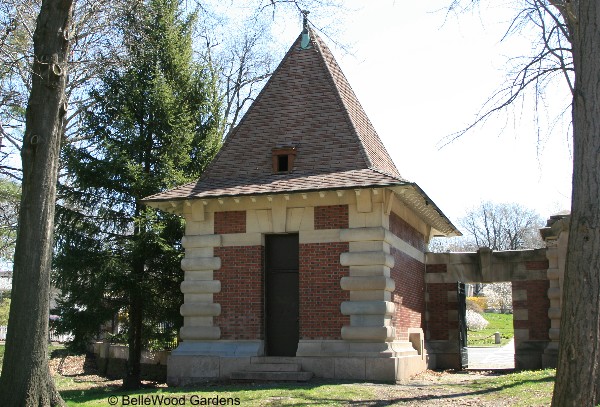
All content included on this site such as text, graphics and images
is protected by U.S and international copyright law.
The compilation of all content on this site is the exclusive property of the site copyright holder.
Thursday, 16 April 2009
Sakura at Branch Brook Park
Here's the back story: last year Priscilla and her daughter went to see the cherry trees in bloom in Branch Brook Park in Newark, New Jersey. This year she, Lucy, and I were going to go but Priscilla and her daughter decided to reprise last year's outing. So Lucy discussed it with some of her master gardener friends, and several of them wanted to go. They invited me to join them. We were going to go last Tuesday, but it was a drizzle-y, completely overcast, and chilly day. So we rescheduled for today, which was a sunny, mild, and beautiful day.
An Essex County Park located in the North Ward of Newark between the neighborhoods of Forest Hill and Belleville, at 360 acres Branch Brook Park is the largest public park in the city of Newark. Nearly 4 miles long and averages 1/4 mile in width, it features a combination of open meadowland and small patches of woodland, streams and lakes on gently rolling terrain. The park was formally created in 1895, making it the nation's first county park. It was named for a branch brook that flowed through the valley into the Passaic River. Second River runs through the heart of Cherry Blossom Land in the northern part of the park.
Private donations and gifts of land from prominent Newark families allowed the park to increase from its initial 60 acres to its current size, becoming one of the largest urban parks in the United States. In 1898, Robert Ballantine presented the park with a handsome beaux-arts entrance gateway, modeled on gates in Scotland, which were erected at the corner of Lake Street and Ballantine Parkway.

.
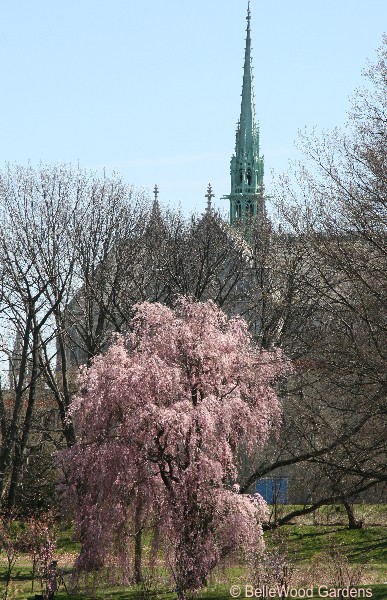
In 1900, the cornerstone for Cathedral of the Sacred Heart Basilica was laid.
One of the largest cathedrals in the United States, it has been placed
on both the New Jersey and National Registers of Historic Places.
.
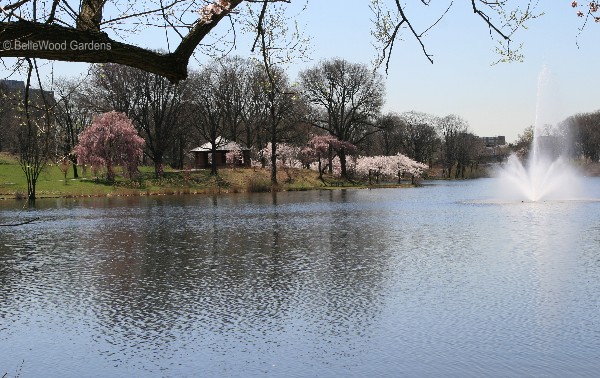
At the time of its creation in 1895 the northern portion of the area was a marsh, known as Old Blue Jay Swamp. Three years later, a public appropriation financed its development into a landscaped lake.
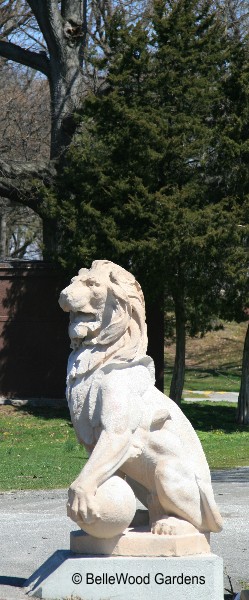
Sculptured lions which flank a formal boat landing originally
were placed in front of the old Newark Prudential building.
In 1900, the Essex County Parks Commission hired the firm of Frederick Law Olmsted to revise the original plans for the park from earlier concepts based on romantic garden themes. In a manner similar to Olmsted's earlier designs of Central Park and Prospect Park, the landscape was given a naturalistic look and feel with acres of meadows and forests, gracefully curving paths and roadways.
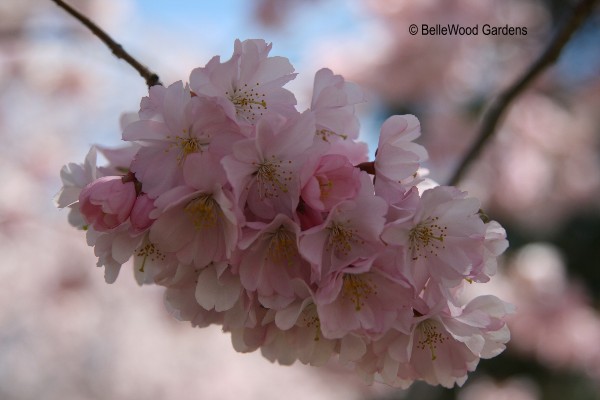
The original Olmsted Brothers design did not include the cherry trees. The first trees were a gift from Caroline Bamberger Fuld, in 1927. She was sister of department store magnate Louis Bamberger, and widow of the store's vice president.
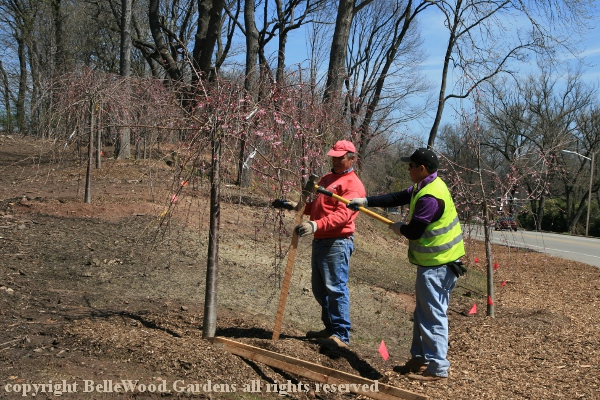
New trees are continually being planted, as we saw today.

The park has a collection of over fourteen different varieties,
and more than 4,000 flowering cherry trees in all.

Collectively called Cherryblossomland, each April the park is the site for a spectacular Cherry Blossom Festival. The visitors center even has a life-size model of a flowering cherry tree.
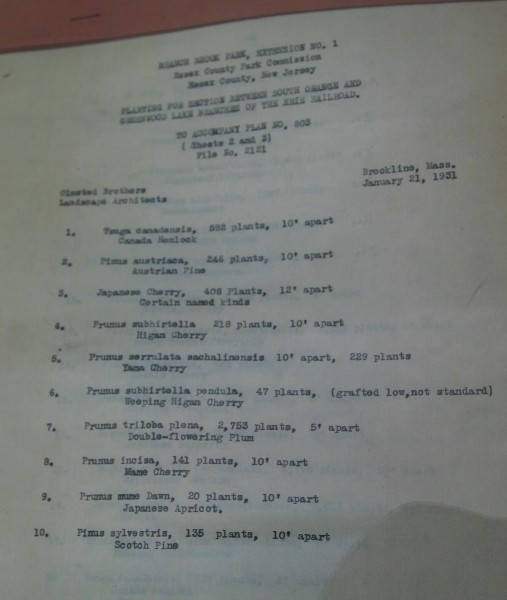
There are display cases with some of the original
correspondence relating to the trees acquisition
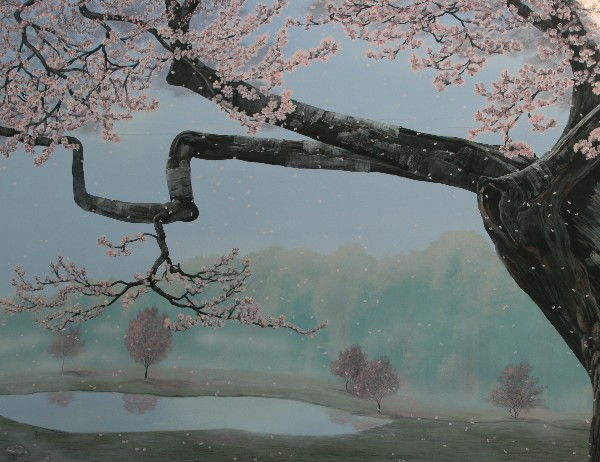
and wonderful murals of (what else?) cherry trees in bloom
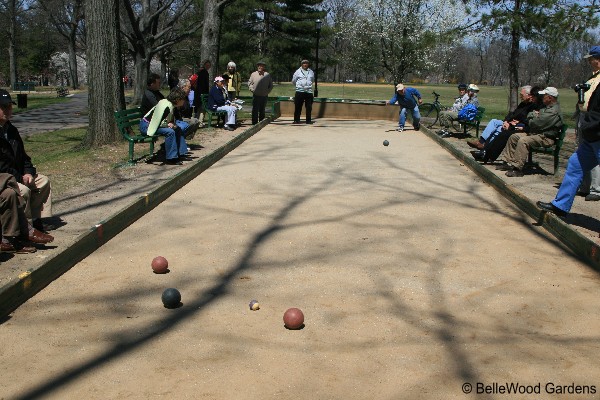
We were not the only visitors, far from it. Most, but not all,
were here for the flowers. There were the bocce enthusiasts.
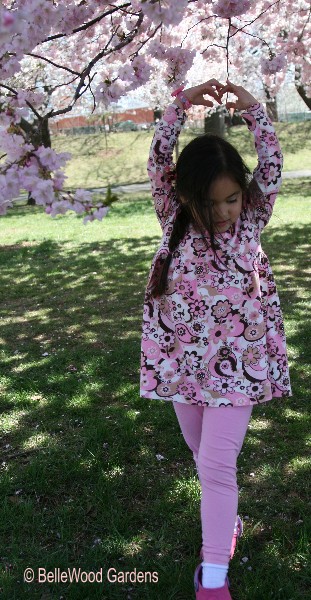
There were parents and their children,

people enjoying their déjeuner sur l'herbe. A robin in a cherry tree
What a splendid time we had, admiring the thousands of trees at their peak of bloom.

.
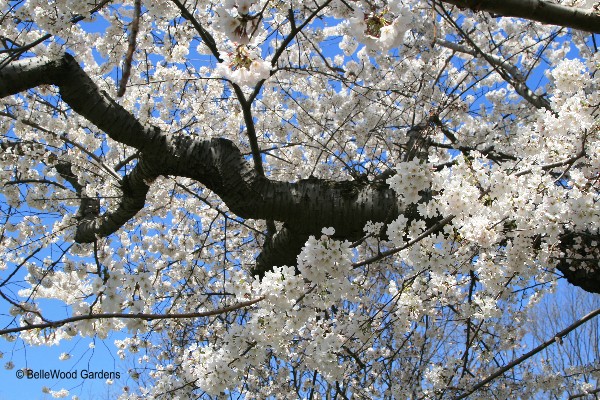
.
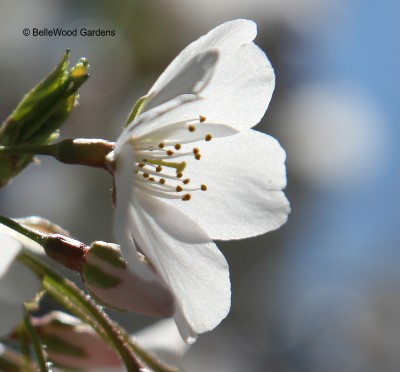
soon rough winds will blow
the tender petals fall
but for today - perfect
Back to April 2009